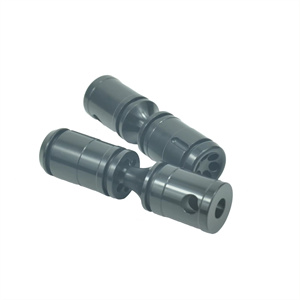Black Oxidation Treatment Of CNC Turned Parts
The black oxidation treatment of CNC Turned Parts is a chemical or electrochemical surface treatment method mainly used for iron containing metals such as steel, stainless steel, and copper. The following is a detailed explanation of CNC Turned Parts black oxidation treatment, including treatment steps, principles, types, and applications:
Processing steps
Workpiece clamping: Design specialized fixtures or lifting tools based on the shape and size of the workpiece to ensure sufficient clearance between CNC Turned Parts, so that each workpiece can be completely immersed in the oxidation solution.
Degreasing: Use alkaline solution to degrease and clean the workpiece to remove oil stains on the surface of CNC Turned Parts. The commonly used formula for degreasing solution is to heat the degreasing solution to 80-90 ℃, and then immerse the workpiece for about 30 minutes.
Acid washing: Use a sulfuric acid solution with a concentration of 10-15% to acid wash CNC Turned Parts to remove rust and oxide stains on the surface of the workpiece. The pickling temperature is usually 70-80 ℃, and the immersion time of the workpiece is about 30 minutes.
Oxidation: Immerse CNC Turned Parts into a solution containing an oxidant for oxidation treatment. Oxidants typically include sodium hydroxide, nitrite, and nitrate. The temperature and time of oxidation treatment depend on the material and thickness of the workpiece. At high temperatures (such as 130-145 ℃), oxidation treatment will form a black oxide film on the surface of the workpiece.
Cleaning: After the oxidation treatment is completed, clean the CNC Turned Parts with clean water to remove residual oxidants and impurities.
Post treatment: In order to enhance the rust and corrosion resistance of the workpiece, CNC Turned Parts are usually subjected to post-treatment, such as oil, wax, or paint.
Principle:
Black oxidation treatment is a chemical reaction between iron elements in metals and oxygen elements in oxidant solutions, forming a dense black oxide film (Fe3O4). This oxide film can effectively isolate air and water, prevent oxidation and corrosion inside the metal.
type
Hot black oxidation: When subjected to oxidation treatment at higher temperatures (such as over 100 ℃), the formed oxide film is thick and uniform, suitable for workpieces with high requirements for rust prevention and corrosion resistance.
Medium temperature black oxidation: Oxidation treatment at lower temperatures (such as 90-120 ℃) can reduce the generation of corrosive gases and is suitable for scenarios with high environmental requirements.
application
Black oxidation treatment is widely used in the surface treatment of CNC Turned Parts, such as screws, nuts, shafts, and other parts. Through black oxidation treatment, not only can the rust and corrosion resistance of parts be improved, but also the appearance quality of parts can be improved, the reflectivity can be reduced, and light pollution can be reduced. In addition, black oxidation treatment can also improve the wear resistance and hardness of parts, extending their service life.
